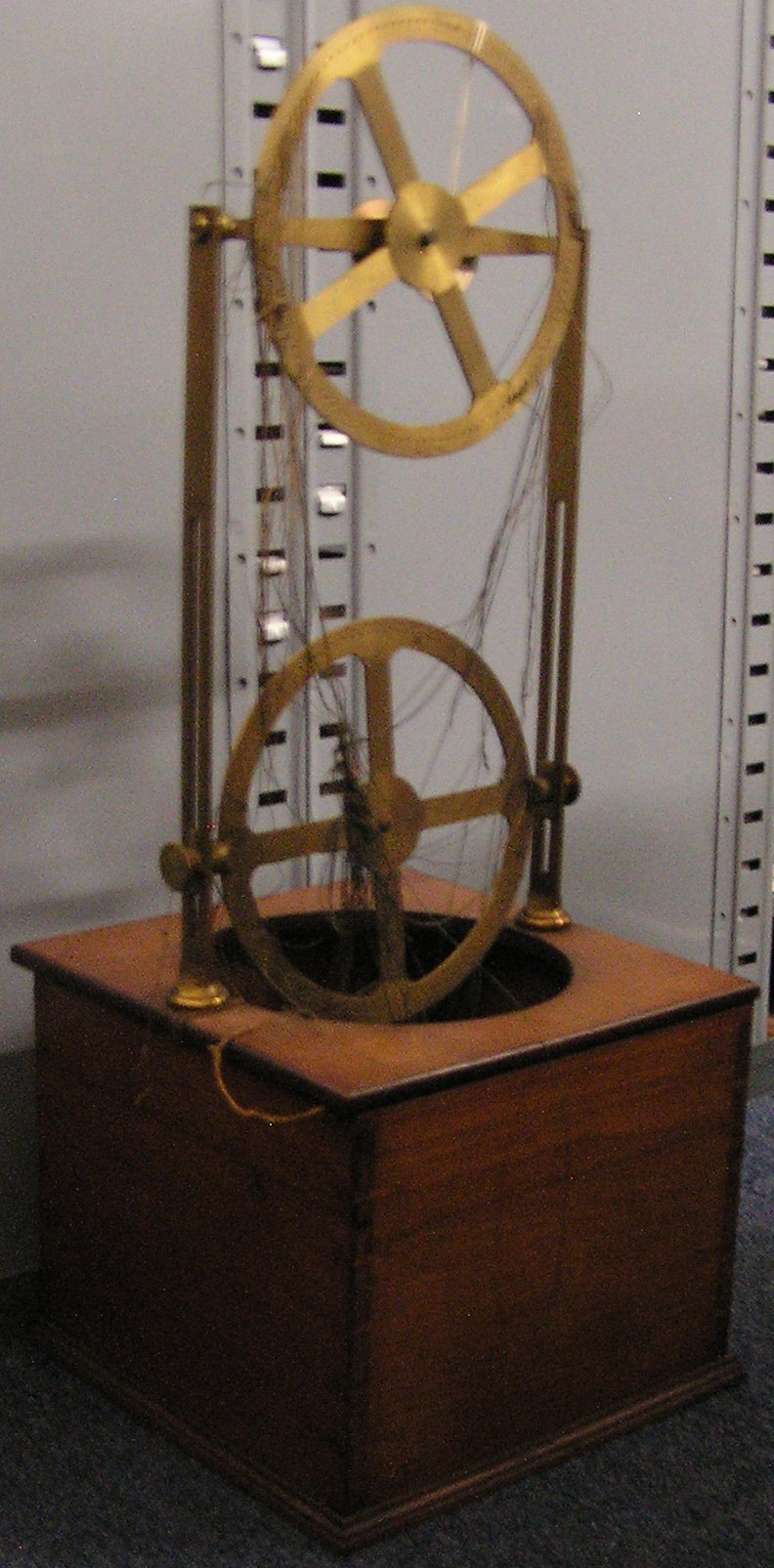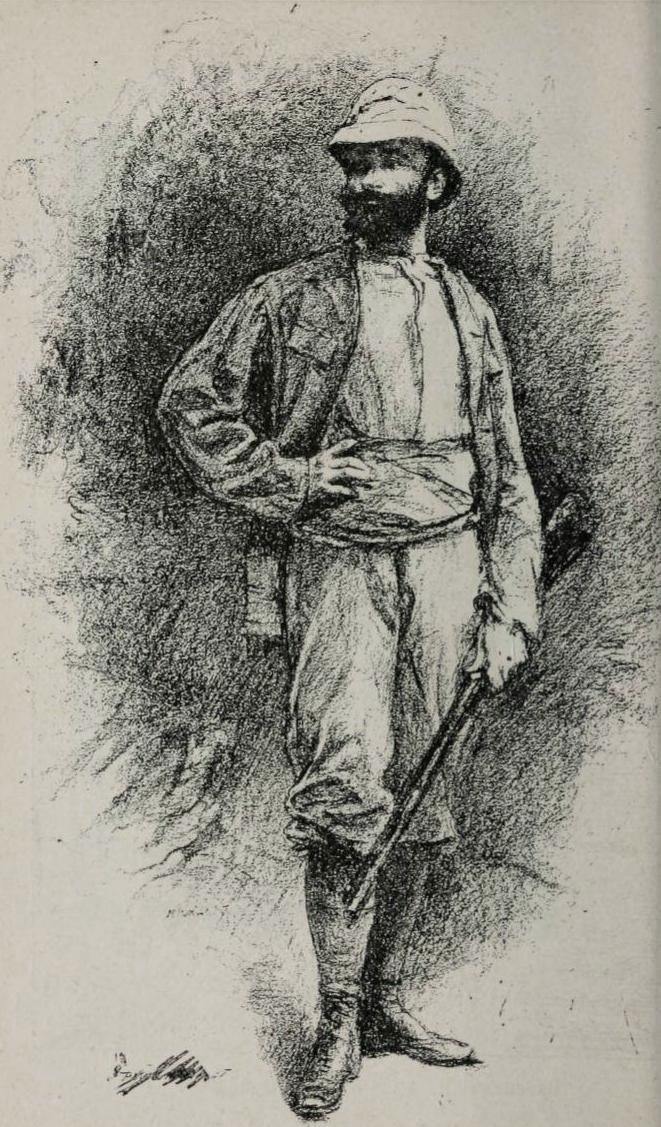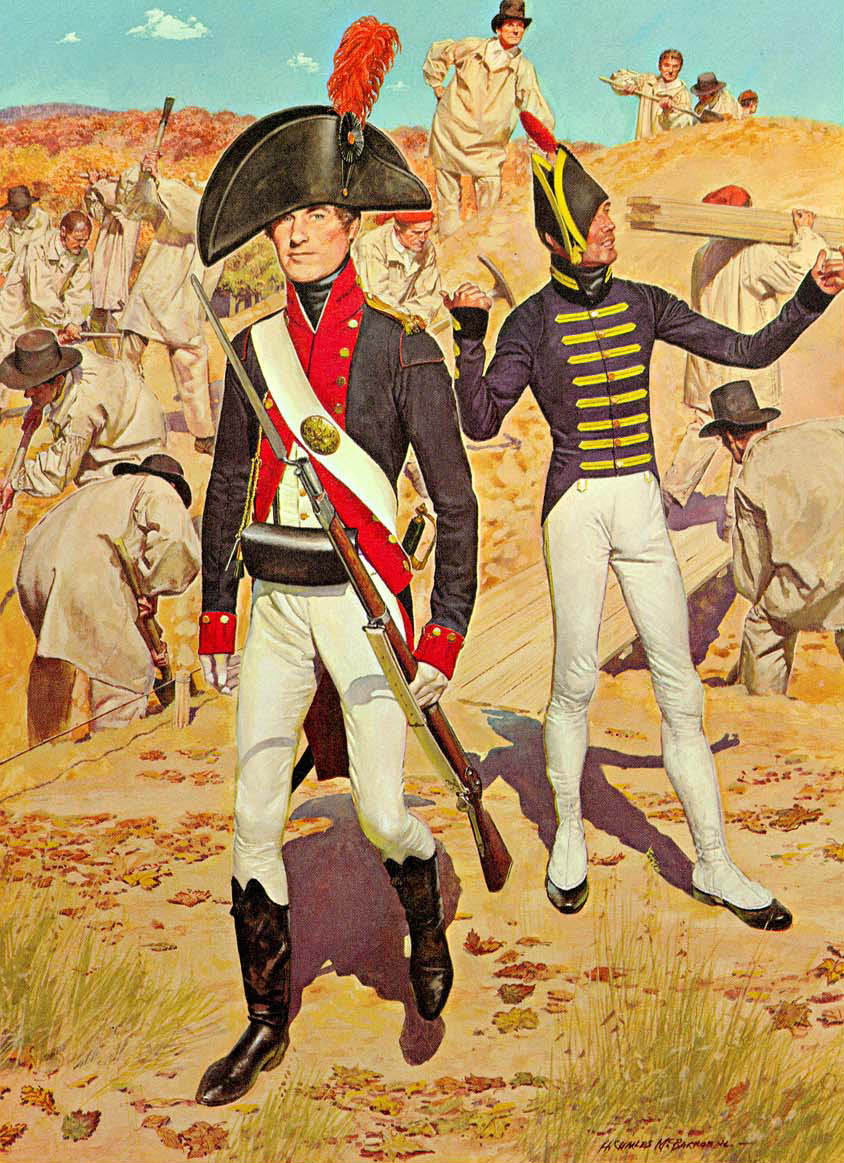|
Théodore Olivier
Théodore Olivier (1793–1853) was a French mathematician. Life and work Olivier studied in the ''Licée Imperial'' of Lyon where he obtained in 1811 a degree in mathematics with high honours. After this, he went to the École Polytechnique. Olivier looked like Napoleon, but nobody could prove that Olivier was an illegitimate son of the Emperor. In 1815, he was an adjunct professor in the Artillery School at Metz and, in 1819, he became a full professor. In 1821, at the request of the King of Sweden, Charles XIV John (Jean-Baptiste Bernadotte), he went to Sweden to organize the military school of Marieberg. Returning to France, Oliver criticized the pedagogical system in the École Polytechnique and in 1829, jointly with Alphonse Lavallée, Jean-Baptiste Dumas and Jean Claude Eugène Péclet, founded the École Centrale des Arts et Manufactures, where he was professor of geometry and mechanics for the rest of his life., page 7. He also was, between 1830 and 1844, a professo ... [...More Info...] [...Related Items...] OR: [Wikipedia] [Google] [Baidu] |
Lyon
Lyon (Franco-Provençal: ''Liyon'') is a city in France. It is located at the confluence of the rivers Rhône and Saône, to the northwest of the French Alps, southeast of Paris, north of Marseille, southwest of Geneva, Switzerland, northeast of Saint-Étienne. The City of Lyon is the List of communes in France with over 20,000 inhabitants, third-largest city in France with a population of 522,250 at the Jan. 2021 census within its small municipal territory of , but together with its suburbs and exurbs the Lyon Functional area (France), metropolitan area had a population of 2,308,818 that same year, the second largest in France. Lyon and 58 suburban municipalities have formed since 2015 the Lyon Metropolis, Metropolis of Lyon, a directly elected metropolitan authority now in charge of most urban issues, with a population of 1,424,069 in 2021. Lyon is the Prefectures in France, prefecture of the Auvergne-Rhône-Alpes Regions of France, region and seat of the Departmental co ... [...More Info...] [...Related Items...] OR: [Wikipedia] [Google] [Baidu] |
Jean Claude Eugène Péclet
Jean Claude Eugène Péclet (10 February 1793 – 6 December 1857) was a French physicist. He was born in Besançon, France. Péclet became, in 1812, one of the first students of the École Normale in Paris with Gay-Lussac and Dulong being his professors. In 1816, he was elected professor at the Collège de Marseille and taught physical sciences there until 1827. Being nominated ''maître de conférences'' (tenured position) at the École Normale Supérieure, he returned to Paris. In 1829, he became a professor of physics at the École Centrale des Arts et Manufactures that was being founded by the businessman Alphonse Lavallée, by Péclet, and by two other scientists, Jean-Baptiste Dumas and Théodore Olivier. His salary was then 3000 Francs per year, plus a share of the profits of this private engineering school. In 1840, Péclet became inspecteur général de l'instruction publique. The Péclet number is named after him. He was Coriolis's brother-in-law. He died in ... [...More Info...] [...Related Items...] OR: [Wikipedia] [Google] [Baidu] |
19th-century French Mathematicians
The 19th century began on 1 January 1801 (represented by the Roman numerals MDCCCI), and ended on 31 December 1900 (MCM). It was the 9th century of the 2nd millennium. It was characterized by vast social upheaval. Slavery was abolished in much of Europe and the Americas. The First Industrial Revolution, though it began in the late 18th century, expanded beyond its British homeland for the first time during the 19th century, particularly remaking the economies and societies of the Low Countries, France, the Rhineland, Northern Italy, and the Northeastern United States. A few decades later, the Second Industrial Revolution led to ever more massive urbanization and much higher levels of productivity, profit, and prosperity, a pattern that continued into the 20th century. The Catholic Church, in response to the growing influence and power of modernism, secularism and materialism, formed the First Vatican Council in the late 19th century to deal with such problems and confirm ce ... [...More Info...] [...Related Items...] OR: [Wikipedia] [Google] [Baidu] |
Aimé Olivier De Sanderval
Aimé Olivier de Sanderval (10 July 1840, Lyon, France – 22 March 1919), comte de Sanderval, was a French people, French adventurer, explorer of West Africa, entrepreneur and author. Early life He was born in Lyon, the second of Olivier brothers, three brothers; Marius was born in 1839 and René in 1843.English Google translation/ref> He attended the lycée Saint-Louis in Paris. He received a Bachelor of Science degree in 1860. In 1864, he graduated from the Parisian École Centrale Paris, Central School of Arts and Manufactures (of which his uncle Théodore Olivier was a co-founder). Velocipedes In August 1865, René and Aimé Olivier, along with Georges de La Bouglise, traveled by velocipede (an early form of the bicycle) across France from Paris to Tullins to visit the Olivers' uncle, Michel Perret; they then continued on to Avignon. While still students at the Central School, the Olivier brothers became acquainted with Pierre Michaux. They became early velocipede manuf ... [...More Info...] [...Related Items...] OR: [Wikipedia] [Google] [Baidu] |
Gear
A gear or gearwheel is a rotating machine part typically used to transmit rotational motion and/or torque by means of a series of teeth that engage with compatible teeth of another gear or other part. The teeth can be integral saliences or cavities machined on the part, or separate pegs inserted into it. In the latter case, the gear is usually called a cogwheel. A cog may be one of those pegsDefinition of "cog" in the ''Oxford Learner's Dictionary'' online. Accessed on 2024-07-29.Definition of "cog" in the ''Merriam-Webster Dictionary'' online. Accessed on 2024-07-29. [...More Info...] [...Related Items...] OR: [Wikipedia] [Google] [Baidu] |
United States Military Academy
The United States Military Academy (USMA), commonly known as West Point, is a United States service academies, United States service academy in West Point, New York that educates cadets for service as Officer_(armed_forces)#United_States, commissioned officers in the United States Army. The academy was founded in 1802, and it is the oldest of the five United States service academies, American service academies. The Army has occupied the site since establishing a fort there in 1780 during the American Revolutionary War, as it sits on strategic high ground overlooking the Hudson River north of New York City. West Point's academic program grants the Bachelor of Science degree with a curriculum that grades cadets' performance upon a broad academic program, military leadership performance, and mandatory participation in competitive athletics. Candidates for admission must apply directly to the academy and receive a nomination, usually from a member of United States Congress, Congr ... [...More Info...] [...Related Items...] OR: [Wikipedia] [Google] [Baidu] |
University Of Columbia
Columbia University in the City of New York, commonly referred to as Columbia University, is a private Ivy League research university in New York City. Established in 1754 as King's College on the grounds of Trinity Church in Manhattan, it is the oldest institution of higher education in New York and the fifth- oldest in the United States. Columbia was established as a colonial college by royal charter under George II of Great Britain. It was renamed Columbia College in 1784 following the American Revolution, and in 1787 was placed under a private board of trustees headed by former students Alexander Hamilton and John Jay. In 1896, the campus was moved to its current location in Morningside Heights and renamed Columbia University. Columbia is organized into twenty schools, including four undergraduate schools and 16 graduate schools. The university's research efforts include the Lamont–Doherty Earth Observatory, the Goddard Institute for Space Studies, and accelerator ... [...More Info...] [...Related Items...] OR: [Wikipedia] [Google] [Baidu] |
Union College
Union College is a Private university, private liberal arts college in Schenectady, New York, United States. Founded in 1795, it was the first institution of higher learning chartered by the New York State Board of Regents, and second in the state of New York, after Columbia University, Columbia College. In the 19th century, it became known as the "Mother of Fraternities", as Union Triad, three of Fraternities and sororities in North America, the earliest Greek letter fraternities were established there.Somers (2003), p. 304 Union began enrolling women in 1970, after 175 years as an all-male institution. The college offers a liberal arts curriculum across 21 academic departments, including ABET, ABET-accredited engineering degree programs. History Founding Chartered in 1795,Fortenbaugh (1978), p. 3 Union was the first non-denominational institution of higher education in the United States, and the second college established in the State of New York. Only Columbia University, ... [...More Info...] [...Related Items...] OR: [Wikipedia] [Google] [Baidu] |
Arts Et Métiers ParisTech
Arts et Métiers ParisTech () is a French engineering and research institute of higher education. It is a ''grande école'', recognized for leading in the fields of mechanics and industrialization. Founded in 1780, it is among the oldest French institutions and is one of the most prestigious engineering schools in France. It has been consistently ranked among the top ten French engineering schools and was ranked fifth in France for Mechanical Engineering in the Shanghai ranking 2018. The school has trained 85,000 engineers since its foundation by François Alexandre Frédéric, duc de la Rochefoucauld-Liancourt. It is a "Public Scientific, Cultural and Professional Institution" (EPSCP) under the authority of the Ministry of Higher Education and Research and has the special status of . The École nationale supérieure d'arts et métiers (ENSAM), which adopted the brand name "Arts et Métiers ParisTech" in 2007, was a founding member of ParisTech (Paris Institute of Technology), hé ... [...More Info...] [...Related Items...] OR: [Wikipedia] [Google] [Baidu] |
École Centrale De Paris
École or Ecole may refer to: * an elementary school in the French educational stages normally followed by secondary education establishments (collège and lycée) * École (river), a tributary of the Seine flowing in région Île-de-France * École, Savoie, a French commune * École-Valentin, a French commune in the Doubs département * Grandes écoles, higher education establishments in France * The École The École, formerly Ecole Internationale de New York, is an intimate and independent French-American school, which cultivates an internationally minded community of students from 2 to 14 years old in New York City’s vibrant Flatiron Distric ..., a French-American bilingual school in New York City * Ecole Software, a Japanese video-games developer/publisher {{disambiguation, geo ... [...More Info...] [...Related Items...] OR: [Wikipedia] [Google] [Baidu] |
Jean-Baptiste Dumas
Jean Baptiste André Dumas (; 14 July 180010 April 1884) was a French chemist, best known for his works on organic analysis and synthesis, as well as the determination of atomic weights (relative atomic masses) and molecular weights by measuring vapor densities. He also developed a method for the analysis of nitrogen in compounds. Biography Dumas was born in Alès (Gard), and became an apprentice to an apothecary in his native town. In 1816, he moved to Geneva, where he attended lectures by M. A. Pictet in physics, C. G. de la Rive in chemistry, and A. P. de Candolle in botany, and before he had reached his majority, he was engaged with Pierre Prévost in original work on problems of physiological chemistry and embryology. In 1822, he moved to Paris, acting on the advice of Alexander von Humboldt, where he became professor of chemistry, initially at the Lyceum, later (1835) at the École polytechnique. He was one of the founders of the École centrale des arts et manuf ... [...More Info...] [...Related Items...] OR: [Wikipedia] [Google] [Baidu] |








